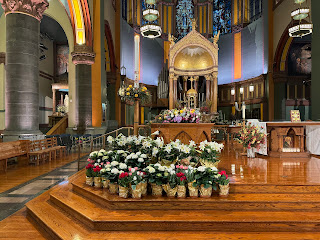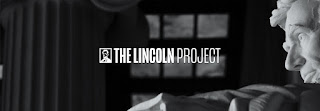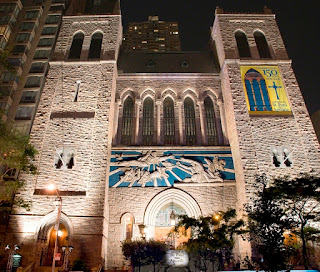We set out to find His friends to tell them.
We went to Jerusalem to tell them;
and with joy we told them, “We have seen the Lord!”
And as we were speaking there, He stood among us, blessed us, said to us,
“Now my peace I leave with you.” We saw Him!
Suddenly our eyes were opened, and we knew He was alive!
Some of the old-timers here may recognize those lines from the second verse of the hymn, In the Breaking of the Bread,* which we used to sing here at Saint Paul’s every Easter season. It recalls some of the highlights from Emmaus to Pentecost, among them the event recounted in today’s Gospel, as the Risen Lord revealed himself to his disciples and transformed them into his Church.
Typically, in these gospel stories of the Risen Lord’s appearances to his disciples, there is the sense that, while this is certainly the same Jesus the disciples had followed in life and who had died on the Cross, something about him is now different. Hence, the startlement and terror before the dramatic moment when Jesus is fully recognized.
Jesus’ resurrection was a real event (every bit as real as his crucifixion), but one which no one witnessed first-hand. What was witnessed initially was an empty tomb – a necessary condition for the resurrection to be true, but insufficient evidence in itself. Something more had to happen, and something more did happen – a series of encounters which captured the novelty and uniqueness of the resurrection, encounters with the glorified body of the Risen Christ in which the Risen Lord demonstrated to his disciples that he was the same Jesus who had lived and died (hence the wounds in his hands and his feet), fully alive now in a unexpectedly new and wonderful way.
Unlike hallucinations or mystical experiences, these were authentic encounters with someone who had lived and died but was now beyond the reach of death, embodied in a completely new way.
The events described in today’s Gospel took place on that same eventful Sunday in Jerusalem, to which the two disciples had rushed back from their exciting encounter with the Risen Lord in the breaking of bread. Perhaps this was the same room where some of them had so recently eaten the Last Supper and where an already growing group of them would gather again after the ascension to await the coming of the Holy Spirit. Since apostolic times (long before it ever became a day off from work), Sunday has been the special day, the irreplaceably privileged day, when Christians assemble in churches to encounter Christ, the Risen Lord, present in the sacramental celebration of the Lord’s Supper, the Eucharist.
To repeat the same news over and over again is one way to bear witness to its importance. To hear the proclamation of the resurrection, over and over, during these Easter Sundays strengthens our faith by the witness of others’ faith. That is why one of the most noticeable features that distinguishes Easter in our Catholic liturgical calendar is the daily reading from the Acts of the Apostles. Through our journey through the book of Acts, we identify ourselves with that first generation of Christians in their experience of the Risen Christ, becoming like them a community which witnesses to the presence and action of the Risen Lord in his Church, a community which expresses its new life in its worship.
And, so, we celebrate Easter not for one day or one week but for seven weeks, during which we relive the experience of those first Christians, transformed forever by the presence and power of the Risen Lord, experienced in the here and now in his word and sacraments. We see how eager they were to share that experience with everyone around them – an eagerness we need to learn from, for each of us is being propelled by the power of the Easter story to trust in its power to transform the world.
Some of you here may also remember how the hymn which I began with concludes.
We ran out into the street to tell them,
everyone that we could meet, to tell them,
“God has raised Him up and we have seen the Lord!”
We took bread as He had done and then we blessed it, broke it, offered it.
In the breaking of the bread, we saw Him!
Suddenly our eyes were opened.
There within our midst was Jesus, and we knew He was alive.
In the breaking of the bread, He is here with us again,
and we know He is alive.
Homily for the Third Sunday of Easter, Saint Paul the Apostle Church, NY, April 14, 2024.
* Hymn by Michael Ward, © 1989.




